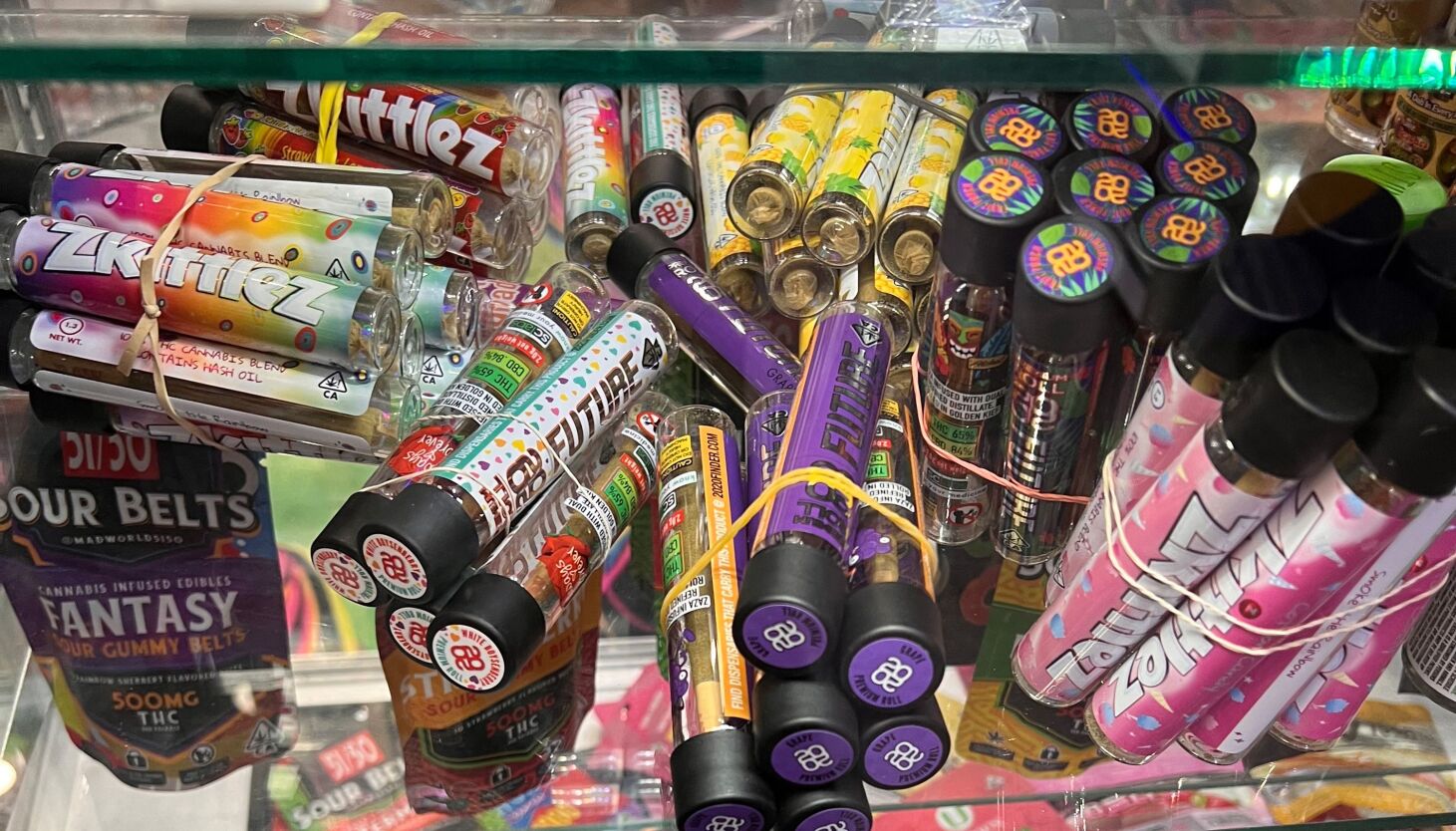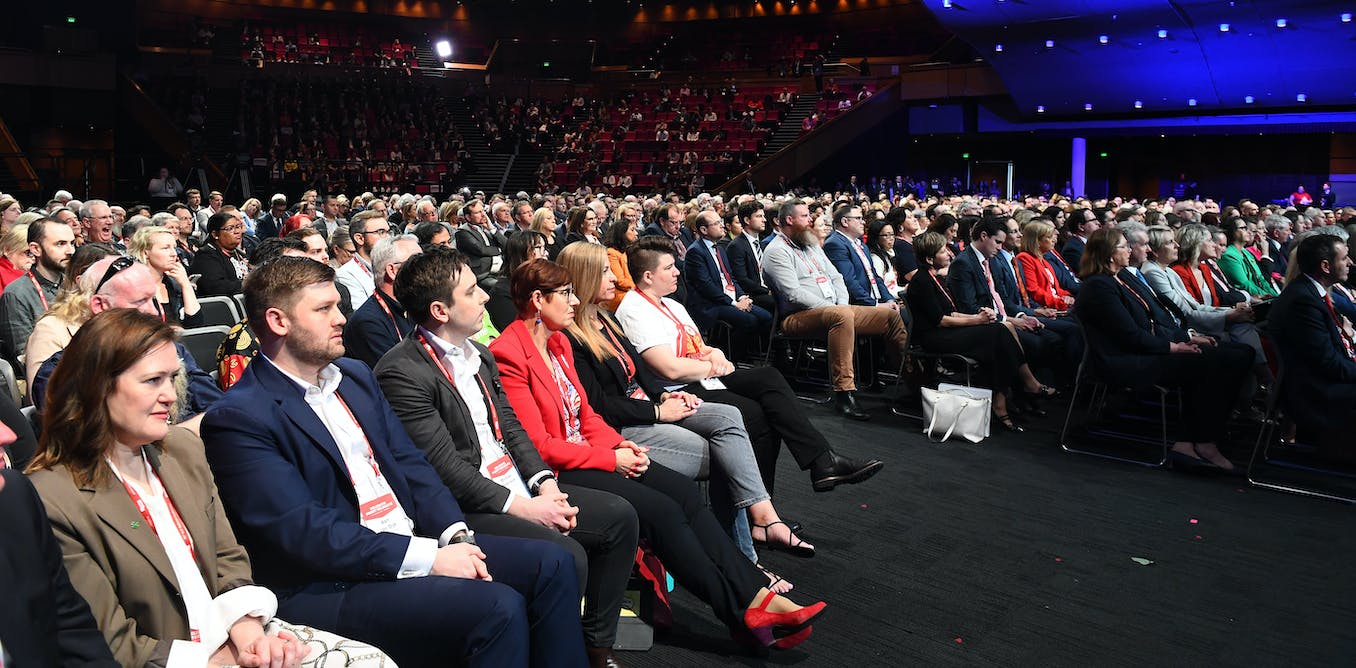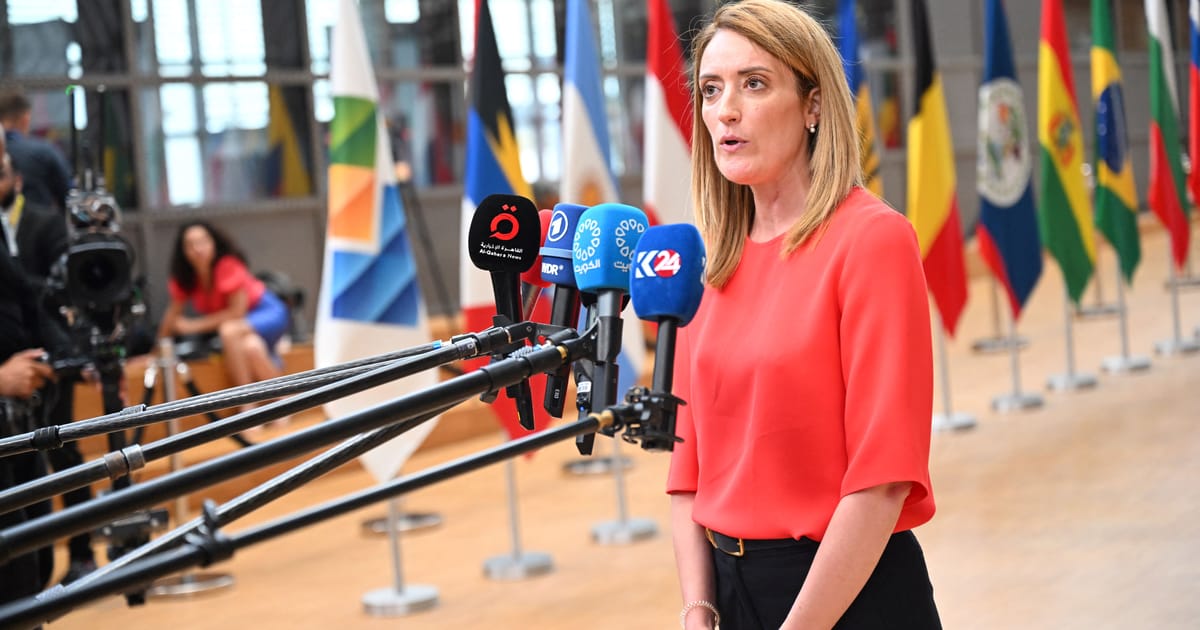This story was originally published by Chalkbeat, a nonprofit news organization covering public education. Sign up for their newsletters here: ckbe.at/newsletters.
The Manhattan 16-year-old started smoking weed to get over a bad breakup, initially keeping the habit outside school hours.
Soon, though, he was using marijuana to address other mental health issues, like depression that suppressed his appetite and anxiety that made it difficult to go to class. He began getting high between classes.
“At first it was edibles, but then it went to a weed pen,” said the teen, whose name is being withheld to protect his privacy. “Bathrooms, blind spots in cameras … in this school, since so many people do it, people know spots.”
Teens experimenting with marijuana is nothing new, but the legal landscape and market for the drug have shifted rapidly, making it easier for young people to get more potent cannabis products they can use discreetly before or during school. At the same time, the ongoing youth mental health crisis, exacerbated by the pandemic, may be pushing more kids to self-medicate with marijuana.
Now, some New York City school staffers are seeing an uptick in student drug use that is spilling into the school day, and they say it’s starting at a younger age. Yet the number of dedicated substance abuse counselors in city schools has been nearly cut in half over the past decade and a half, leaving many schools unsure how to respond.
“We definitely have seen an increase in incidents of kids using marijuana,” said Anna Nelson, an assistant principal at Bronx Latin, a public school that serves grades 6-12. “It used to be a problem with our high school kids, but now…we have kids coming to school high as young as middle school.”
Nelson added, “There are a lot of kids in a lot of pain from the pandemic who don’t know how to address it. It’s like self-medicating.”
Education department numbers obtained by Chalkbeat seem to back up educators’ observations. Reports of “controlled substances” and drug paraphernalia found on students at school were up 8% so far this year compared to the same period in 2019, according to the data, even though the K-12 student population has fallen by 11% in that time.
The increases were even greater in middle school, an education department spokesperson confirmed, though she did not provide specific numbers.
School Disciplinary Reports Show Only Part of Problem
Disciplinary records might offer a limited window into the problem. Student cannabis use often goes undetected, and some schools may be responding to the uptick without relying solely on disciplinary or punitive measures, which drug experts say are often ineffective in curbing substance use.
One small Manhattan high school is assigning students caught getting high during the school day to attend peer-led restorative circles. Another is mandating three sessions with a staffer who has a background in substance abuse counseling. Officials at Manhattan’s highly selective Beacon High School told parents this fall that students caught vaping in school will be suspended, while offering information sessions for parents about substance use.
But at the same time, educators say schools often don’t have the resources or training to give students the more intensive support they need.
“For schools to really have an impact requires staff that are well-trained,” said Annie Annunziato, an assistant principal at Urban Assembly Institute of Math and Science for Young Women, a 6-12 school in Downtown Brooklyn. “And we have so many kids who are in need right now, socially and emotionally already, and so many kids who are engaging in drug use that the amount of resources and personnel it would take to make shifts is a lot bigger than what schools have.”
The education department said it uses a “range of systems” to support students with substance use issues, including deploying substance abuse counselors to educate students about drugs and alcohol while identifying and supporting kids with substance use disorders.
Substance Abuse Prevention and Intervention Specialists, or SAPIS, “work directly in schools to provide prevention and intervention services, including counseling, conflict resolutions, peer-leadership programs, and more,” said agency spokesperson Jenna Lyle.
But the number of substance abuse counselors employed by the education department across the city’s 1,600 public schools has been nearly cut in half from 500 in 2006 to roughly 280 last year, according to the New York’s Office of Addiction Services and Supports, which funds the counselors. The reduction was due in large part to the elimination of a federal grant in 2010, state officials said.
The Marijuana Landscape Is in Flux
The cannabis landscape in New York City has changed dramatically following the drug’s legalization in 2021.
The law, enacted to end the decades-long law enforcement response to marijuana that disproportionately targeted Black and Latino New Yorkers, is just now offering the first licenses for legal, adult-use dispensaries, with first priority for vendors impacted by the war on drugs. The city last week became home to the state’s first legal marijuana dispensary.
But while the official process rolls out, a bevy of unlicensed vendors have sprung up across the city. And while marijuana remains illegal for anyone under 21, students said it’s not hard to get.
“Access has become easier,” said a 16-year-old sophomore who attends school in Downtown Brooklyn and spoke on the condition of anonymity. “If you go down the street to get some pizza, you can get some weed.”
Some research has shown that states that legalized marijuana saw youth rates rise soon after, though other studies have shown no effect.
A staffer at a Queens youth residential drug treatment center, who spoke on the condition of anonymity, said that “19 out of 20” new referrals are now for cannabis addiction, a big change from 15 years ago, when the majority of patients came through the criminal justice system and brought a wider range of drug addictions.
The drug treatment staffer said he worries that legalization has sent the message that cannabis is harmless.
“The biggest change I’ve seen in the past year, year and a half, is kids saying, ‘I can get high, it’s legal,’” the staffer said. “To them it’s almost like it’s replaced nicotine.”
School staff said it’s not just the number of kids using the drug that’s changed, but the age at which they’re starting.
One veteran middle school principal, who spoke on the condition of anonymity, said in a decades-long career that’s spanned “all different kinds of schools and communities, maybe once a year there’s a kid who we maybe sort of suspect, and in the last couple years it’s been much more than that.”
Up-to-date data on youth cannabis use, locally and nationally, can be hard to pin down. New York City’s most recent health department survey data only reaches up to 2016, showing that levels had increased slightly over the previous decade, though remained lower than national averages.
A national survey of 50,000 middle and high school students conducted earlier this year found that youth marijuana use, after largely holding steady over the past two decades, dipped during the pandemic and began to bounce back last year. It remained at lower levels than before the pandemic, and much lower than decades ago. Vaping of marijuana and nicotine, meanwhile, were both up significantly since tracking started in 2017, though still hadn’t returned to pre-pandemic levels, according to data from the University of Michigan’s Monitoring the Future study.
The number of young kids accidentally eating cannabis edibles has increased dramatically between 2017 to 2021, according to a recent analysis of national poison control data.
Lyla Hunt, the deputy director of New York’s Office of Cannabis Management, stressed that part of the goal of legalizing cannabis is to regulate the market and root out illicit vendors who are more likely to sell to children and offer products with higher THC, or tetrahydrocannabinol, levels.
“In an unregulated cannabis market, there’s no controls whatsoever to ensure that cannabis products stay away from young people,” she said.
A More Intoxicating Marijuana Takes Hold
To Hunt’s point, marijuana now often contains far higher levels of THC, the intoxicating ingredient, than it did several decades ago.
“It’s no longer cannabis. It’s not the same drug,” said Yasmin Hurd, the director of the Addiction Institute at Mount Sinai Hospital. “It used to be 2% to 4% THC. … We have kids getting 70% to 80% to 90% THC.”
The higher potency brings a host of added complications, experts say, including increased likelihood of a cyclic vomiting syndrome tied to high THC concentrations and cannabis-induced psychosis that can send kids to emergency rooms.
But perhaps the most significant change for schools is that cannabis is now widely available in packages that are easier for students to use discreetly on campus and harder for adults to catch. Students can inhale an entire joint’s worth of weed from just several puffs of THC concentrate in a vape pen in the bathroom, or pop a THC-filled gummy during class.
Some schools are trying to keep up by finding more sophisticated ways to monitor in-school drug use, like installing monitors that can detect vaping in bathrooms.
Other educators say that leaning on surveillance to curb student drug use during school hours won’t work and could further alienate students.
“Now, with the availability of gummies and edibles, it’s really, really, really hard to manage,” said Martin Urbach, the director of restorative justice at Harvest Collegiate High School in Manhattan’s Union Square. “I can’t ethically or morally or legally go to a teen and say, ‘Hey I saw you eating a gummy,’” and assume that the candy had marijuana in it.
Mental Health Plays a Central Role
Addiction and mental health experts say it’s impossible to divorce the conversation about youth substance use from the one about the teen mental health crisis.
Many teens are open about turning to weed to dull the symptoms of anxiety, depression, and post-traumatic stress disorder that spiked during the pandemic.
Almost 75% of teens across the country reported experiencing at least one traumatic event during the pandemic, according to the Centers for Disease Control and Prevention – raising the likelihood of lasting mental health conditions.
“People had a lot of time on their hands being home and everything and not really having the time to process the emotions of having to go back to school,” said a 16-year-old junior at a public high school in Downtown Brooklyn, who spoke on the condition of anonymity. It was often easier for a teenager to turn to marijuana “than dealing with stuff,” she said.
Diana Martinez, a Columbia University psychiatrist who specializes in addiction and works with several New York City public schools, said the “data is very clear that teens with mental health issues are more likely to start using drugs.”
The Manhattan 16-year-old who described smoking his weed pen during the school day said he found it easier to attend class when high.
“I could focus more in classes, I wouldn’t tend to skip as much or aimlessly walk around the halls. I would actually be in class more,” he said.
The problem, experts say, is that while cannabis can bring temporary relief, it can exacerbate depression and anxiety in the long term, while interfering with learning and socializing at school.
“What people do is misinterpret intoxication for reducing anxiety,” Hurd said. “When they’re no longer intoxicated, their anxiety is exacerbated … the more you use, the worse your anxiety gets.”
Using drugs at school as a teen, moreover, is often an indication of problematic drug use or addiction, experts said. And the risks are especially pronounced for teenagers, whose brains are still developing, and who can’t learn in the same way while under the influence.
But sometimes, the greater worry for school staffers who see students getting high during the school day is what else might be going on in their lives. When Urbach, the restorative justice counselor, sees a student using, he thinks, “I’m worried about you. What is making you feel like you have to do that at 9:45 a.m.?”
Schools Scramble to Respond, but Lack Resources
As New York City and much of the rest of the country move away from a punitive and law enforcement-based response to marijuana, many schools are trying to follow suit.
A decade ago, it wasn’t uncommon for police to get involved when students were found with marijuana in schools, but now, school staffers are more likely to respond on their own, multiple educators said.
Under the education department’s disciplinary code, possessing or using a controlled substance at school is a “level four” infraction that can result in disciplinary actions like suspensions but also supportive services like referrals to substance abuse counseling. Selling drugs on school property is a more serious offense.
When school staff suspect a student is intoxicated, they are supposed to send the student to the nurse while school safety agents confiscate any drugs or paraphernalia. Multiple administrators said they’ve also had to call ambulances for students who were intoxicated at school.
“We’ve had to call 911, kids pass out,” said Nelson. “They’re just taking this stuff that they have no idea what they’re taking.”
Several educators said they felt attaching consequences like suspensions to student marijuana use in school is still important to send the message that it violates community norms and makes the environment feel less safe for other students.
But many schools are also working hard to develop alternatives to exclusionary discipline.
The Manhattan high school student who smokes during the school day was caught once. The school contacted his parents and assigned him several sessions with a counselor, he said.
“It was not fun,” said the teen, adding that getting caught didn’t stop him from smoking during the school day. He suggested that officials who catch students using should “not be obnoxious about it and go super hard” and “talk to a student first, and maybe see what’s happening instead of going to the parents.”
One former SAPIS said that sometimes the best way to counsel students who are using cannabis during school is by employing a “harm reduction” lens, a drug treatment approach that focuses on reducing the harm caused by drug use rather than extinguishing it altogether.
That could mean setting up a schedule with a student and blocking out certain times of the day they’re not going to smoke — like before an afternoon sports practice — “as opposed to [saying] ‘you shouldn’t smoke’” at all, the former SAPIS said.
For the most serious cases, school staff can refer students to outpatient or residential drug treatment facilities, though spaces are often hard to find.
There are some promising initiatives underway, experts said, like a program run by Mt. Sinai that integrates specialized substance abuse counseling and mental health support in several city public schools.
The education department runs an alternative school, ReStart Academy, with 20 sites, dedicated in part to serving students with substance use issues.
Martinez, the Columbia psychiatrist, is working on a handbook to help school staff better understand the phenomenon of students self-medicating with drugs.
But schools will need significantly more resources and training to effectively deal with student substance use issues, which aren’t likely to abate on their own, experts said.
“We have to rethink education, and cannabis has clearly done that without a doubt,” said Hurd. “It’s only going to get worse unless we understand we have a new reality.”




